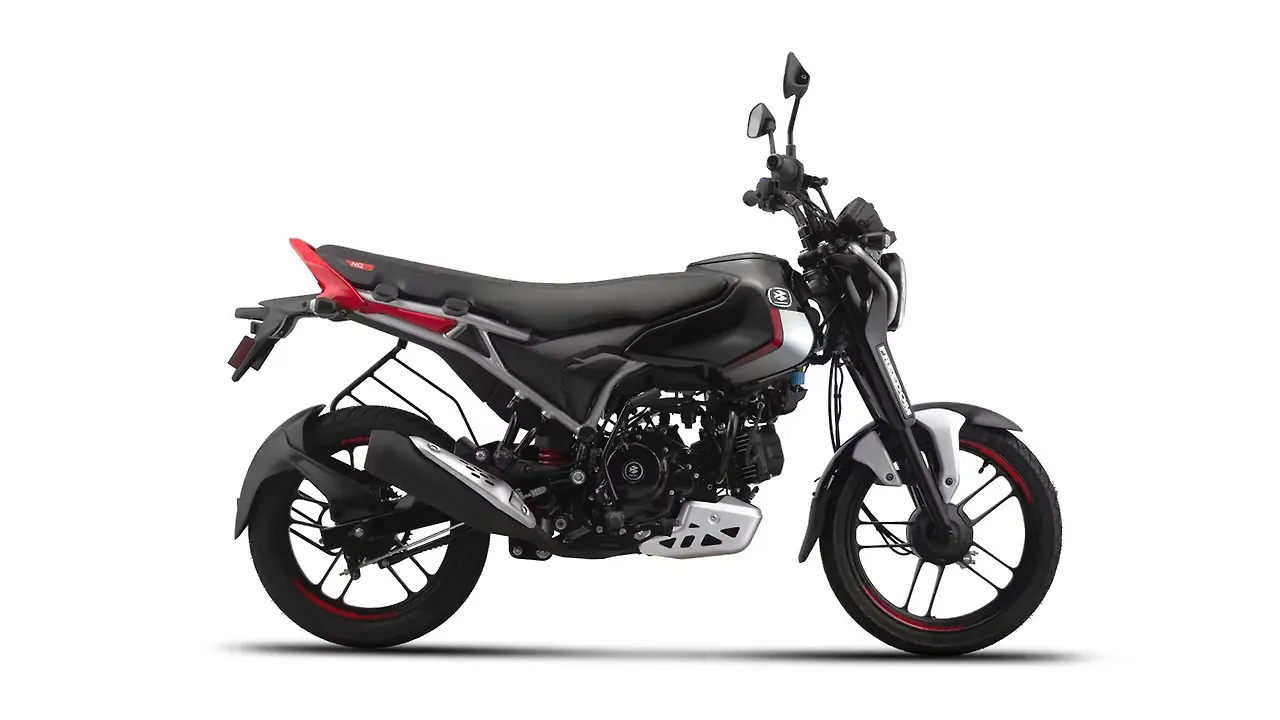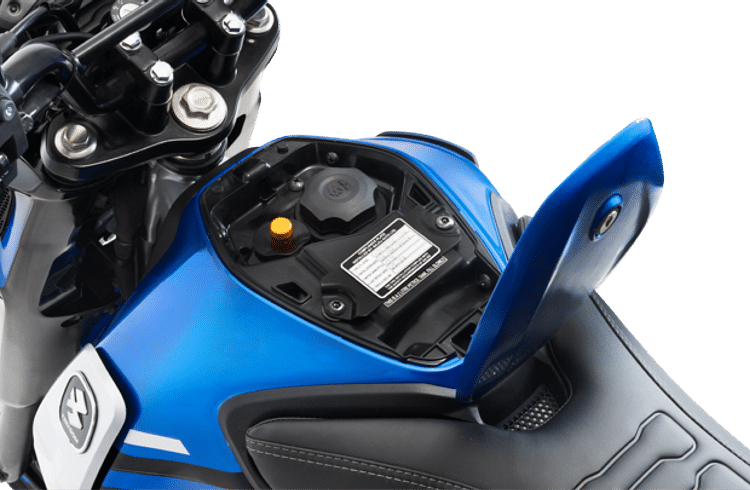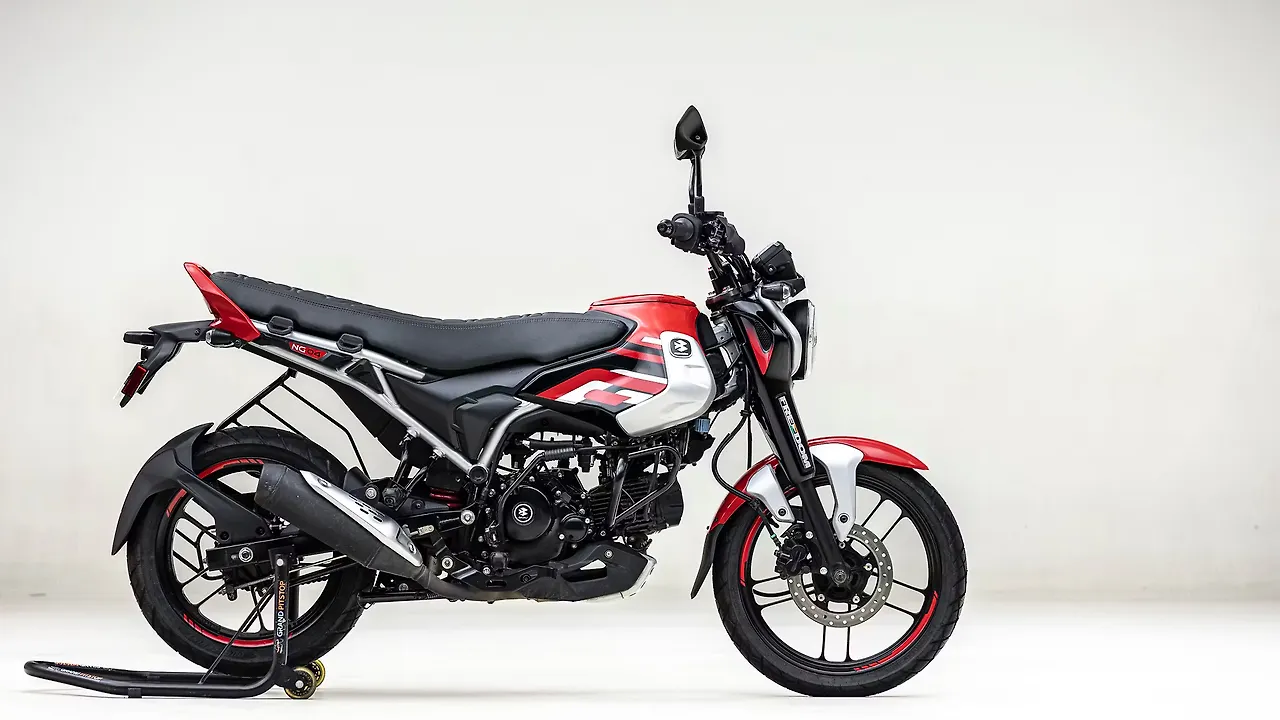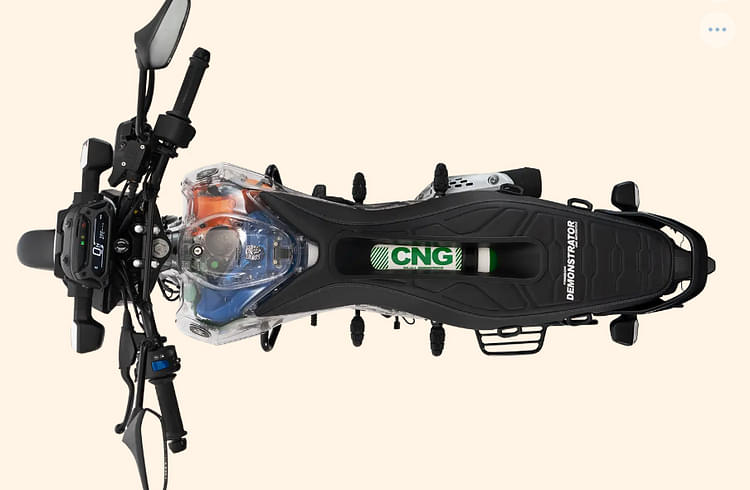
The Bajaj Freedom 125 CNG represents a groundbreaking achievement as the world’s first factory-fitted CNG motorcycle, combining innovative dual-fuel technology with practical commuter-centric features.
Bajaj Freedom 125 CNG Price & Variants
Bajaj Freedom 125 CNG is available in 3 different variants, the starting model is priced at Rs 91,130 and the top model goes up to Rs 1.07 lakh Ex-showroom India(Bharat).
| Model / Variant | Ex-showroom Price India |
| Freedom 125 NG04 Drum | ₹ 91,130 |
| Freedom 125 NG04 Drum LED | ₹ 1,03,518 |
| Freedom 125 NG04 Disc LED | ₹ 1,07,217 |
Colour Options
Bajaj Freedom 125 CNG is available in 7 different colour options.
- Racing Red
- Cyber White
- Ebony Black-Grey
- Pewter Grey-Black
- Caribbean Blue
- Ebony Black-Red
- Pewter Grey-Yellow
Engine & Performance Specifications
| Parameter | Specification |
|---|---|
| Engine Type | 4-Stroke, Air Cooled |
| Displacement | 124.58 cc |
| Bore x Stroke | 54 mm x 54.4 mm |
| Compression Ratio | 10.5:1 |
| No. of Cylinders | 1 |
| Valves per Cylinder | 2 |
| Cooling System | Air Cooled |
| Max Power | 9.5 PS @ 8000 rpm |
| Max Torque | 9.7 Nm @ 5000 rpm |
| Top Speed (CNG) | 90.5 kmph |
| Top Speed (Petrol) | 93.4 kmph |
| Emission Standard | BS6-2.0 |
| Fuel System | Dual Fuel (CNG + Petrol) |
| Starting System | Self Start Only |
Transmission & Drivetrain Specifications
| Parameter | Specification |
|---|---|
| Transmission Type | Manual |
| Gearbox | 5-Speed |
| Clutch Type | Wet Multiplate |
| Drive Type | Chain Drive |
| Gear Shifting Pattern | 1 Down, 4 Up |
| Final Drive | Chain |
Bajaj Freedom 125 CNG Fuel System & Range

| Parameter | Specification |
|---|---|
| CNG Tank Capacity | 2 kg |
| CNG Tank Volume | 12.5 Litres |
| Petrol Tank Capacity | 2 Litres |
| CNG Range | 202 km |
| Petrol Range | 130 km |
| Combined Range | 330 km |
| CNG Mileage | 100-102 km/kg |
| Petrol Mileage | 65 kmpl |
| Fuel Switching | On-the-go switching via handlebar switch |
Bajaj Freedom 125 CNG Chassis & Suspension
| Parameter | Specification |
|---|---|
| Frame Type | Trellis Frame |
| Front Suspension | Telescopic Fork (30mm) |
| Rear Suspension | Mono-shock with Linkages |
| Front Suspension Travel | 125 mm |
| Rear Suspension Travel | 120 mm |
| Frame Material | Steel Trellis |
| Subframe | Protective cage for CNG tank |
Brakes & Wheels Specifications
| Parameter | Specification |
|---|---|
| Front Brake (Base/Mid) | Drum (130mm) |
| Front Brake (Top) | Disc (240mm) |
| Rear Brake | Drum (130mm) |
| Front Brake Diameter | 130mm (Drum) / 240mm (Disc) |
| Rear Brake Diameter | 130mm |
| Braking System | Combi Brake System (CBS) |
| Front Tyre Size | 90/80-17 |
| Rear Tyre Size | 120/70-16 |
| Tyre Type | Tubeless |
| Wheel Type | Alloy |
| Front Wheel Size | 17-inch |
| Rear Wheel Size | 16-inch |
Dimensions & Capacity Specifications

| Parameter | Specification |
|---|---|
| Overall Length | 2010 mm |
| Overall Width | 840 mm |
| Overall Height | 1000 mm |
| Wheelbase | 1340 mm |
| Seat Height | 825 mm |
| Ground Clearance | 170 mm |
| Kerb Weight | 147.8 kg |
| Seat Length | 785 mm (Segment Leading) |
| Seat Type | Single Long Seat |
| Pillion Accommodation | Yes, with grab rail |
Features & Technology Specifications
| Parameter | Specification |
|---|---|
| Instrument Console | Fully Digital |
| Display Type | LCD |
| Bluetooth Connectivity | Yes (Top variants) |
| USB Charging Port | Yes |
| Call/SMS Alerts | Yes (with Caller ID) |
| Speedometer | Digital |
| Odometer | Digital |
| Tripmeter | Digital |
| Fuel Gauge | Dual (CNG & Petrol) |
| Clock | Digital |
| Real-time Mileage | Yes |
| Tilt Adjustable Console | Yes (Segment First) |
| Gear Indicator | Yes |
| Pass Switch | Yes |
Lighting & Electrical Specifications
| Parameter | Specification |
|---|---|
| Headlight (Base) | Halogen |
| Headlight (Top) | LED |
| DRLs | LED (Top variants) |
| Tail Light | LED |
| Turn Indicators | LED |
| Hazard Warning | Yes |
| Low Fuel Warning | Yes |
| Malfunction Indicator | Yes |
| High Beam Indicator | Yes |
| Battery | Maintenance-free |
Safety Features & Certifications
| Parameter | Specification |
|---|---|
| CNG Tank Certification | PESO Certified |
| Safety Tests Conducted | 11 Rigorous Tests Passed |
| Frame Protection | Trellis Frame Cage Protection |
| Tank Location | Under Seat (Protected) |
| Heat Isolation | Engine positioned away from tank |
| Pressure Monitoring | Digital gauge monitoring |
| Emergency Features | Instant fuel switching |
| Crash Test Standards | 1.5T frontal, 10T truck runover |
| Tank Inspection | Every 2 years mandatory |
Environmental Impact & Sustainability
The Bajaj Freedom 125 offers eco-friendly commuting with significantly lower harmful emissions compared to traditional petrol bikes.
| Parameter | Specification |
|---|---|
| CO₂ Reduction | 25% Lower than petrol bikes |
| CO Reduction | 73.5% Reduction |
| NMHC Reduction | 80% Less emissions |
| Fuel Cost Savings | Up to 50% running cost reduction |
| Environmental Impact | Greener mobility solution |
| Alternative Fuel | Compressed Natural Gas |
Compare All Bajaj Freedom 125 Variants
| Features | Freedom 125 NG04 Disc LED | Freedom 125 NG04 Drum LED | Freedom 125 NG04 Drum |
|---|---|---|---|
| Front Brake | Φ240 Disc | Φ130 Drum | Φ130 Drum |
| Rear Brake | Φ130 Drum (CBS) | Φ130 Drum (CBS) | Φ110 Drum (CBS) |
| Front Tyre | 90/80 – 17 (TL) | 90/80 – 17 (TL) | 80/90 – 17 (TL) |
| Rear Tyre | 120/70 – 16 (TL) | 120/70 – 16 (TL) | 80/100 – 16 (TL) |
| Rider Seat Height | 825 mm | 825 mm | 825 mm |
| Headlamp | LED | LED | Bulb |
| Instrument Cluster / Connectivity | Inverted Full LCD with Connectivity | Small LCD without Connectivity | Small LCD without Connectivity |
| CNG Capacity | 12.5 L / 2 kg | 12.5 L / 2 kg | 12.5 L / 2 kg |
| Petrol Capacity (Limp Home) | 2 L | 2 L | 2 L |
| Belly Pan | Plastic + Steel Metal | Plastic + Steel Metal | Sheet Metal only |
| Tank Cover Flap | Yes | Yes | No |

How safe are CNG vehicles? And Bajaj Freedom 125 CNG bike
In India, millions of new cars run on CNG (Compressed Natural Gas) every year. However, many people who do not use CNG vehicles are skeptical. They say the usual things, “You have to wait in line at CNG stations.”, “Mileage is good, but pick-up is poor.”, “CNG is not good for long routes.”, “The tank can burst, CNG is flammable.”
But this is not the whole truth, petrol and diesel cars also catch fire, and often more than CNG vehicles. So why are only CNG vehicles blamed?, let’s find out.
Is CNG really dangerous ?
No. In fact, CNG is safer than LPG.
LPG (like the gas used in homes) is heavier than air, so when it leaks, it settles closer to the ground and can catch fire.
CNG is lighter than air. If it leaks, it rises and disperses quickly, making it less dangerous.
The ignition temperature of CNG (540 degrees Celsius (1004 degrees Fahrenheit)) is higher than that of Petrol (between 247°C and 280°C (477°F and 536°F)) and LPG (between 365°C and 580°C, or 761°F to 1020°F), which means it needs more heat to catch fire.
So scientifically, CNG does not catch fire any more easily than petrol.
But what about pipes, valves and fittings?
When CNG is used in vehicles, the gas passes through pipes, valves and fittings, which naturally face wear and tear. That is why strict government regulations exist. Vehicle manufacturers must comply with safety standards, and many companies go above and beyond.
Below are the important steps taken by the world’s first CNG bike, the Bajaj Freedom 125.
The CNG tank is fitted in the middle of the chassis so that it is safe in case of an accident. And so that direct impact on the CNG tank can be avoided.
- Bajaj has conducted crash tests (including driving a truck over it) to check safety.
- The tanks are tested by filling them with pressure higher than the normal refilling pressure.
- In case of leakage, a brass valve releases the CNG away from the bike, thereby reducing the risk.
- Each tank comes with a PESO certificate and a unique certificate given to the customer.
- Also, every 3 years, hydrostatic testing is required to ensure the system is operating safely.

The real problem – Aftermarket CNG kits
Most accidents or safety concerns arise from aftermarket CNG kits. These often do not meet the proper quality standards. That is why manufacturers and governments insist on.
- Exiting the vehicle during refueling.
- Regular testing and certification.
- Use of only approved CNG systems.
Precaution is safety
I will tell you an interesting thing that in airplanes, you may have never heard of a fire during refueling, but still, the announcement while boarding the plane tells passengers not to fasten their seat belts during refueling. “Please pay attention, the plane is being refueled, please keep your seat belts unfastened, stay seated.” You may have never heard of a fire in airplanes, but for safety reasons, the seat belts are instructed to be unfastened, people can get out quickly. Caution is always better.
The same applies to CNG. These rules are not because CNG is unsafe, but because caution is always a good thing.
Why trust Bajaj?
Bajaj has been working with CNG technology in their three-wheelers for over 25 years. With the Freedom 125, they have applied the same expertise to bikes as well.
And the best part here is, this bike doesn’t even look like a “CNG bike”. The design, comfort and riding experience are like any regular petrol bike. You can easily switch between CNG and petrol, whether in traffic or on the highway, with the touch of a button.
Like other CNG vehicles, You have to get off the bike while refilling CNG, and this is a safety measure, not a defect.
FAQs on CNG Safety & Bajaj Freedom 125 Bike
What is a CNG bike?
A CNG bike is a two-wheeler that runs on compressed natural gas (CNG) instead of just petrol. It reduces running costs and emissions, making it more environmentally friendly and economical.
Which company launched the first CNG bike?
The world’s first CNG bike is the Bajaj Freedom 125, which was launched by Bajaj Auto in 2024.
How much mileage does a bike get on 1 kg of CNG?
On an average, a bike can run for about 102 km on 1 kg of CNG (as per the efficiency of Bajaj Freedom 125).
How many kg of CNG cylinder does a Bajaj Freedom bike have?
The Bajaj Freedom 125 comes with a 2 kg CNG cylinder and a 12.5 litre water capacity tank, plus a 2 litre petrol reserve tank.
How many gears does the Bajaj Freedom CNG bike have?
The Bajaj Freedom 125 is equipped with a 5-speed gearbox.
How much does the Bajaj Freedom CNG bike cost?
The price of the Bajaj Freedom 125 CNG bike starts at around ₹95,000 (ex-showroom, India), depending on the variant.
Can the Bajaj Freedom 125 CNG bike explode?
No. CNG tanks are rigorously tested at high pressure and come with a PESO certificate. In case of leakage, the gas is safely vented.
Are CNG vehicles more dangerous than petrol or diesel?
Absolutely not. CNG is lighter than air, disperses quickly and has a higher ignition temperature, which makes it safer than LPG or petrol in many situations.
Why do I need to get off the bike when refilling CNG?
This is a precautionary measure for safety – similar to airline refueling regulations – so that riders can get away quickly if needed.
Is the Bajaj Freedom 125 safe?
Yes. Bajaj has conducted several crash tests, including driving a truck over the bike’s CNG tank. The tank sits securely inside the chassis, which keeps it safe even from direct impacts. And it comes with a PESO certificate.
Is the Bajaj Freedom 125 CNG suitable for long routes/rides?
Yes. And if CNG is not available, the Bajaj Freedom 125 can switch to petrol at any time, thanks to its 2-litre reserve petrol tank.
Does CNG affect the performance of the vehicle?
The pick-up is a bit different compared to petrol, but for daily commuting, the performance is smooth and comfortable. Plus, you save a lot on running costs.
What about long-term use – does CNG wear out pipes and valves?
That’s why hydrostatic testing is mandatory every 3 years. It checks whether everything is safe and leak-free.










